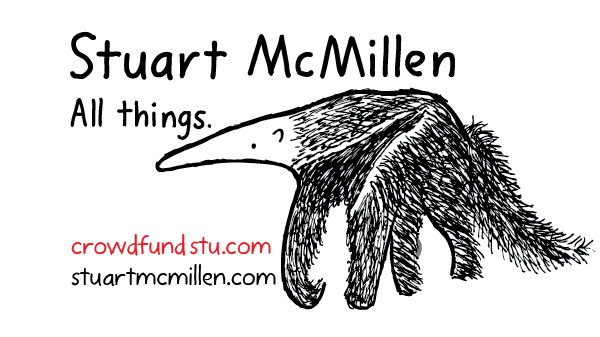I plan each of my new comics expecting that they will be, one day, translated into multiple languages.
My website stuartmcmillen.com was custom-designed with support for multiple languages as a high priority. The website uses the WordPress plugin
Polylang to coordinate all of the various languages. I would be lost without this excellent plugin.
My comics are created using the software Adobe Illustrator. After I have finished the artwork for a comic, I add the text captions on a 'layer' that sits above the artwork. Each translated version of the comic is, therefore, created from the original high-quality master artwork file.
I draw the entire the entire artwork scenes that sit behind my captions. This enables me to grow or shrink my captions, based on how concise the translation is. So sometimes other languages
see more artwork than the
English readers do. Sometimes they
see less artwork.
To save time with lettering, I use a special font, based on my handwriting. This is much better than translators using Comic Sans or another unofficial font. Naturally, my handwriting font is only useful for languages using Latin characters (e.g.
German,
French,
Spanish...). It is not suitable for languages like
Chinese and
Greek.
I provide my translators with scripts which have information about the meaning behind the English words and phrases that I have chosen to use. This hopefully minimises the guessing game for my translators.
All of this is possible because my comics are about factual, non-fiction topics. If I was publishing funny comics, I think that the jokes would often be lost in translation.
